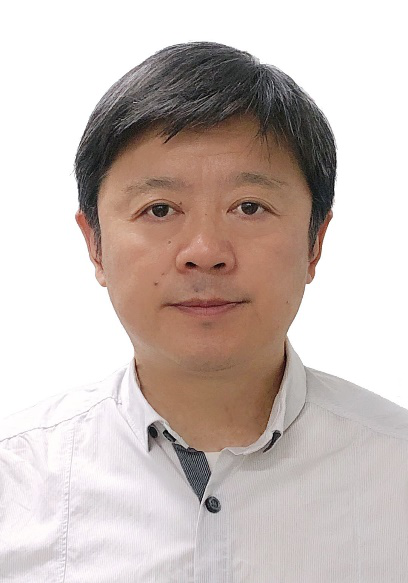| 姓名: |
林滨 |
 |
| 性别: |
男 |
| 英文名: |
Lin Bin |
| 人才称号: |
|
| 职称: |
教授、博导 |
| 职务: |
null |
专业: |
机械制造及其自动化 |
| 所在机构: |
机械工程系 |
个人主页: |
|
| 邮箱: |
linbinph@tju.edu.cn |
办公地点: |
天津大学机械工程学院,300072 |
| 传真: |
+86(0)22 23617208 |
办公电话: |
+86(0)22 23617208 |
| 主要学历: |
1983.09-1987.07 天津理工大学机械制造专业,本科生,获工学学士
1991.09-1993.03 天津大学机械制造工程专业,硕士研究生,获工学硕士
1995.04-1999.09 天津大学机械制造工程专业,博士研究生,获工学博士
|
| 主要学术经历: |
1993.04-1995.05 天津大学机械工程系,助教
1995.06-2001.07 天津大学机械工程系,讲师
2001.07-2008.07 天津大学机械工程学院机械工程系,副教授
2008.07-至今 天津大学机械工程学院机械工程系,教授
2004年4月-2004年10月 英国Liverpool J.M.大学先进制造技术实验室(AMTReL)高访学者
2006年6月-2006年10月 英国Nottingham大学M3学院先进制造工程实验室客座研究员
|
| 主要研究方向: |
硬脆材料精密、超精密加工理论与关键技术
数控加工工艺与装备
故障诊断与动态监控
|
| 主要讲授课程: |
机械制造技术基础
工程制图基础
精密加工与纳米技术
金属切削理论
|
| 主要学术兼职: |
中国机械工程学会高级会员
中国机械工程学会生产工程分会磨粒加工专业委员会委员
全国切削与先进制造技术学会委员常务理事
全国切削与先进制造技术学会华北分会秘书长
|
| 主要学术成就: |
主持与参加国际合作基金、国家自然科学基金、重大专项及973项目等20余项,发表论文60余篇,其中被SCI收录40余篇。2015年中核集团科学技术特等奖,2002年获国家教育部科技进步三,2005年获国家级教学二等奖,国家发明专利6项。
|
| 主要科研项目: |
1. 国家自然科学基金面上项目,基于激光声表面波的硬脆材料加工表面/亚表面残余应力检测理论与方法研究,项目负责人;
2. 国家自然科学基金面上项目,先进陶瓷磨削表面力学损伤评价及其可控磨削技术研究,项目负责人;
3. 先进陶瓷磨削表面/亚表面力学损伤评价及其可控磨削技术研究,国家自然科学基金,项目负责人;
4. 国家自然科学基金面上项目,基于激光表面波技术的硬脆材料加工表面/ 亚表面损伤检测理论与方法研究,项目负责人;
5. 国家自然科学基金面上项目,工程陶瓷精密磨削表面损伤及形貌特征 表征技术研究,项目负责人;
6. 分子动力学微观超精密磨削理论物理建模与动态仿真技术,国家自然科学基金,项目完成人;
7. 国家科技重大专项项目,核工业专用零部件制造装备换脑工程(子课题),项目负责人;
8. 国家科技重大专项项目, DLTT-125大型薄壁回转体零件高速精 密数控车床(子课题),项目负责人;
9. 国家自然科学基金委员会与英国皇家学会国际合作项目,陶瓷磨削表面残余应力理论与实验研究,中方项目负责人;
10. 国家973计划项目,2014CB046603,新一代超大型运载火箭薄壁结构制造的科学问题 (课题三:弱刚性薄壁构件的近恒刚度加工及其误差自适应补偿),参与;
|
| 代表性论著: |
1. Quantifying the subsurface damage and residual stress in ground silicon wafer using laser ultrasonic technology: A Bayesian approach[J]. Mechanical systems and signal processing, 2022, 173: 109008. (SCI Journal, JCR/Q1, TOP)
2. Study on the relationship between the damage of machined surface layer and the dispersion curve of laser-induced surface acoustic wave[J]. Optics & Laser Technology, 2022, 148: 107667. (SCI Journal, JCR/Q1)
3. Evaluation of the surface damage of brittle materials based on the attenuation of laser-induced surface acoustic wave[J]. Applied Acoustics, 2022, 189: 108617. (SCI Journal, JCR/Q1)
4. Analysis of amplitude and frequency detection error of surface acoustic wave generated by laser line source[J]. Applied Acoustics, 2021, 177: 107934. (SCI Journal, JCR/Q1)
5. Numerical simulation of laser-generated Rayleigh wave pulses propagation in the machined surface with residual stress using finite-difference method[J]. Optik, 2021, 248: 168072. (SCI Journal, JCR/Q2)
6. Inversion of surface damage and residual stress in ground silicon wafers by laser surface acoustic wave technology[J]. Ultrasonics, 2021, 113: 106367. (SCI Journal, JCR/Q1)
7. Synchrosqueezed wavelet transform-based method for characterizing the dispersive nature of laser-excited surface acoustic waves propagating through the coated or damaged medium[J]. Measurement, 2021, 185: 109965. (SCI Journal, JCR/Q1)
8. Study on the effect of laser-assisted machining on tool wear based on molecular dynamics simulation[J]. Diamond and Related Materials, 2020, 109: 108022. (SCI Journal, JCR/Q1)
9. Time-frequency analysis of laser-excited surface acoustic waves based on synchrosqueezing transform[J]. Ultrasonics, 2020, 106: 106147. (SCI Journal, JCR/Q1)
10. Analysis of velocity calculation methods of laser-induced surface acoustic wave[J]. Ultrasonics, 2020, 100: 105985. (SCI Journal, JCR/Q1)
11. Analysis of local features of engineering ceramics grinding surface[J]. Measurement, 2020, 151: 107205. (SCI Journal, JCR/Q1)
12. Study of laser-induced surface acoustic wave propagating on materials with machined surfaces based on wavelet analysis[J]. Surface and Coatings Technology, 2019, 358: 173-181. (SCI Journal, JCR/Q1, TOP)
13. Dynamic simulation of mirror cutting[J]. The International Journal of Advanced Manufacturing Technology, 2019, 103(9): 4331-4340. (SCI Journal, JCR/Q1)
14. Optimization of variable helix cutter for improving chatter stability[J]. The International Journal of Advanced Manufacturing Technology, 2019, 104(5): 2553-2565. (SCI Journal, JCR/Q1)
15. Analysis of velocity calculation methods of laser-induced surface acoustic wave[J]. Ultrasonics, 2020, 100: 105985. (SCI Journal, JCR/Q1)
16. Modeling of cutting forces in end milling based on oblique cutting analysis[J]. The International Journal of Advanced Manufacturing Technology, 2016, 84(1): 727-736. (SCI Journal, JCR/Q1)
17. Automated inspection of engineering ceramic grinding surface damage based on image recognition[J]. The International Journal of Advanced Manufacturing Technology, 2013, 66(1): 431-443. (SCI Journal, JCR/Q1)
18. Study on the optimization of cutting parameters in turning thin-walled circular cylindrical shell based upon cutting stability. The International Journal of Advanced Manufacturing Technology, 2013, 69(1): 891-899. (SCI Journal, JCR/Q1)
19. Fractal analysis of engineering ceramics ground surface, Applied Surface Science 258 (2012): 6406– 6415. (SCI Journal, JCR/Q1, TOP)
20. Study on the convection heat transfer coefficient of coolant and the maximum temperature in the grinding process[J]. The International Journal of Advanced Manufacturing Technology, 2009, 42(11): 1175-1186. (SCI Journal, JCR/Q1)
21. An experimental study on molecular dynamics simulation in nanometer grinding[J]. Journal of Materials Processing Technology, 2003, 138(1-3): 484-488. (SCI Journal, JCR/Q1, TOP)
22. Investigation of tool geometry in nanometric cutting by molecular dynamics simulation[J]. Journal of materials processing technology, 2002, 129(1-3): 105-108. (SCI Journal, JCR/Q1, TOP)
23. Study of synthesis identification in the cutting process with a fuzzy neural network[J]. Journal of materials processing technology, 2002, 129(1-3): 131-134. (SCI Journal, JCR/Q1, TOP)
24. Analysis of material removal in alumina ceramic honing[J]. Journal of materials processing technology, 2002, 129(1-3): 167-170. (SCI Journal, JCR/Q1, TOP)
|
|

